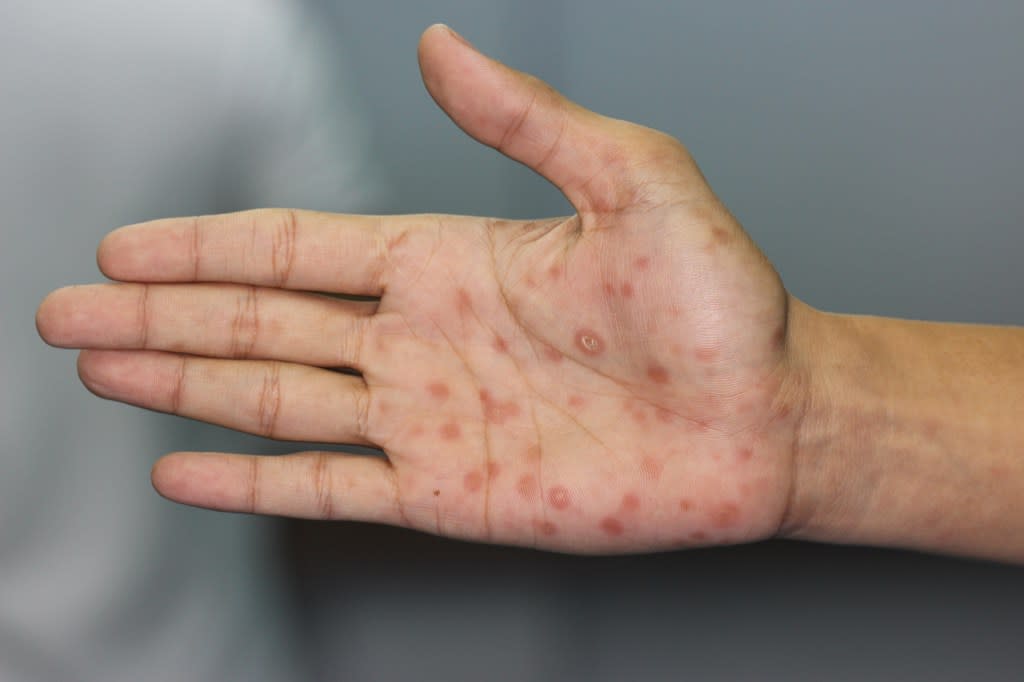Syphilis cases soar to highest level in 70 years — CDC sounds alarm over ‘unacceptable’ crisis

Syphilis cases have soared to their highest level in more than seven decades, according to disturbing new data from the Center for Disease Control and Prevention (CDC).
A staggering 207,000 syphilis cases were reported in the US in 2022 — an 80% increase since 2018.
“The syphilis crisis in our country is unacceptable,” Health and Human Services Secretary Xavier Becerra declared in a press release on Tuesday, sounding the alarm over the “critical” public health crisis.
According to the CDC data, more than 170,000 syphilis cases were reported back in 1951. The number dropped dramatically after the widespread availability of antibiotics. By 1998, annual case numbers had dropped below 40,000, before creeping up again over the past two decades.
“In the United States, syphilis was close to elimination in the 1990s, so we know it’s possible to reverse this epidemic,” Dr. Jonathan Mermin, director of CDC’s National Center for HIV, Viral Hepatitis, STD, and TB Prevention, stated.
Dr. Nima Majlesi, Director of Medical Toxicology at Staten Island University Hospital, told The Post there are two major reasons for the rise in cases.
“People are using condoms less and less frequently,” he declared, saying that public health messages have “de-emphasized” the importance of safe sex in recent years.
Secondly, Dr. Majlesi says syphilis has become so uncommon in recent decades that it now often goes unrecognized, even by doctors, in its early stages.
“We are diagnosing it a little later, so by the time we do, [the patient] may have already spread it,” he explained.

The disease— also called “The Great Pretender,” as its symptoms can look like many other diseases – is spread by direct contact with a syphilis sore during vaginal, anal or oral sex. The sores are painless, meaning they often go untreated. Four to 10 weeks after infection, a rash often develops across a sufferer’s body.
Without medical treatment, syphilis can subsequently spread to the brain, nervous system or eyes, potentially causing blindness, deafness, and paralysis.
Meanwhile, data shows there are also surging rates of congenital syphilis across the country.
Congenital syphilis occurs when an infected mother passes the infection on to the newborn. When transmitted during pregnancy, it can cause miscarriage, lifelong medical issues, and infant death.
There were also more than 3,700 cases of congenital syphilis documented among newborns in 2022 — more than 10 times the number diagnosed in 2012.
Late last year, Health and Human Services created the National Syphilis and Congenital Syphilis Syndemic (NSCSS) Federal Task Force in a bid to help slow the spread of the disease.

According to the CDC press release, syphilis rates were highest among American Indian or Alaska Native people, but gay men and black Americans are also disproportionately affected.
Despite comprising 13% of the US population, black Americans represented nearly 32% of all syphilis cases.
“The Biden-Harris Administration is committed to addressing this urgent issue and using all available means to eliminate disparities in our health care system,” HHS Secretary Becerra declared in Tuesday’s statement.
The soaring rates of syphilis come amid an “out of control” STD epidemic.
Last year, the CDC reported that gonorrhea cases spiked by 28% across the country in 2021.
